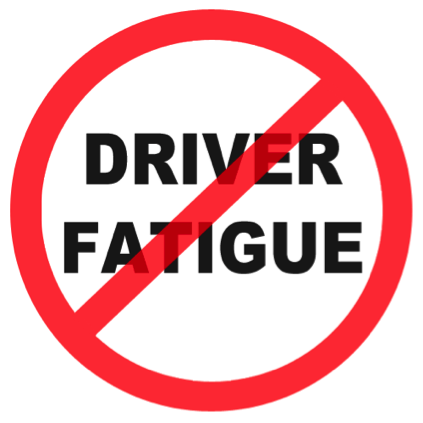
Drivers who suffer from fatigue continue to be one of the most dangerous hazards we face on the road. The statistics are staggering. One recent estimate puts the number of fatigue-related crashes per year at over 100,000, which cause over 1,500 deaths. The problem is particularly prevalent among commercial truck and bus drivers, with new research indicating that 1 in 5 crashes involving large trucks or busses are caused by fatigue.
This is perhaps why, in 2016, the National Transportation Safety Board put reducing fatigue-related crashes on its “Most Wanted List,” its annual list of the most significant transportation safety issues that is intended to raise public awareness and, ultimately, create changes in safety laws.
The need to raise public awareness about this important issue stems, in part, from the fact that many public misconceptions exist about fatigued driving. These misconceptions—about the symptoms, the causes, and which groups are most at risk—has led to a dangerous underestimation of the problem.
In Zehl & Associates’ continuing effort to raise awareness on this important issue, here are four of the most common misconceptions about fatigue and driving:
1. It Is Only Dangerous To Drive When You Actually Feel Sleepy
One of the most common misconceptions is that the only time it is dangerous to drive is when you are noticeably sleepy, drowsy, or tired (for example, when your eyes feel “heavy”). While being noticeably sleepy is of course a sign of fatigue and a dangerous condition in which to drive, you can still be dangerously fatigued even though you do not feel like you are on the verge of falling asleep.
This is because the symptoms of fatigue can be very subtle, and drivers are notoriously bad at recognizing these not-so-obvious symptoms. Even crash investigators have trouble identifying the signs of a crash caused by fatigue. Fatigue causes a wide range of symptoms, such as impaired memory, slower reaction times, and poor decision-making, some of which are difficult to notice or which may be mistaken for some other condition.
The dangerous irony of being fatigued behind the wheel is that your judgment may be too impaired to realize that you are fatigued. This is why it is important to take appropriate, advance action to prevent fatigued driving in the first place, such as getting proper sleep and eating a healthy diet. Waiting to the point where you actually feel sleepy while driving may be too late.
2. If You Get Enough Hours of Sleep, You Won’t Get Fatigued Behind the Wheel
Another common misconception is that sleeping a certain number of hours on a particular night means that you do not have to worry about being fatigued while driving. Some believe that, as long as they get to bed at a certain hour, they will be fine. Although it is imperative to get enough hours of sleep, even getting the appropriate number of hours will not necessarily reduce your risk of a fatigue-related crash. (Harvard Medical School believes that the majority of adults require 7.5 to 8.5 hours of sleep every 24 hours.)
In addition to getting sufficient hours of sleep, it is also very important to get quality sleep. Numerous factors contribute to whether you are getting quality sleep. Sleep disorders, such as obstructive sleep apnea, can dramatically reduce the quality of sleep. Also, certain medications can reduce the quality of sleep.
Also, the consistency of quality sleep you get is important. This is because fatigue is a cumulative concept. Each night you get less sleep than you need, a “sleep debt” begins accruing, which can cause chronic fatigue. The only way to eliminate this “debt” is to get quality sleep on a consistent basis.
3. Fatigue-Related Crashes Only Happen At Nighttime
Another misconception is that fatigue-related crashes only occur during the nighttime. People tend to worry less about getting fatigued while driving during the daylight hours.
While it is true that most fatigue-related crashes occur between midnight and 6:00 a.m., a substantial amount of crashes also occur in the mid-afternoon hours between 2:00 p.m. and 4:00 p.m. This is another time when people are likely to become tired, based on a naturally occurring “dip” in your normal circadian rhythm.
4. Older People Are More Likely to Have Fatigue-Related Crashes
Many people believe that drivers of more advanced ages (age 40 years and older) are more likely to have fatigue-related crashes. This is perhaps due to a general feeling that older people tend to have less energy than younger people and therefore are more prone to dozing off.
In fact, the exact opposite is true. According to the National Highway Transportation Safety Administration, drivers aged 24 and younger have the highest risk of being in a fatigue-related crash. The National Sleep Foundation has relatedly found that drivers aged 18 to 29 are more likely to drive while feeling drowsy than other age groups. Although no age group is immune from fatigue-related crashes, the research shows that younger people have a higher risk than any other age group.
Our Truck and Bus Accident Lawyers have set Records for Victims of Fatigue-Related Crashes: Call 1-888-603-3636 for a Free Consultation
The personal injury attorneys at Zehl & Associates, PC have been on the front lines of fighting fatigued driving and raising awareness about this important issue. In the past two years alone, Ryan Zehl and Kevin Haynes have obtained millions of dollars for passengers that were catastrophically injured by fatigued Greyhound bus drivers.
If you or a loved one has been the victim of a fatigued driver, contact Zehl & Associates, PC.
Related Resources:
- Sleep Apnea and Commercial Drivers: A Deadly Combination
- Sleep Apnea & Commercial Drivers: Infographic
- $6,000,000 Greyhound Settlement from Fatigue Related Bus Accident Lawsuit
- Zehl & Associates Depositions Appear in CBS Special on Medically Unfit Bus and Truck Drivers
- Ryan Zehl Interviewed about $6 Million Settlement from Fatigue Related Bus Accident